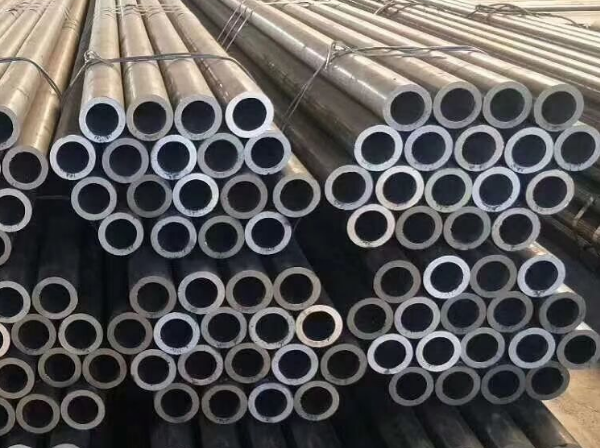To understand how many millimeters are generally left for the processing allowance of
seamless pipes, we must first understand the dimensional tolerance range of the product itself. The dimensional tolerance of a product refers to the allowable variation range of the actual size of the product. (Explanation: Due to factors such as equipment, environment, technology, materials, etc., we cannot produce absolutely consistent product sizes. The size of any product is a relative value, not an absolute value. It is an allowed controllable range size value. ) The purpose of tolerance setting is to ensure that the variation in product dimensions is within this range, so as to meet the requirements for interchange or mutual coordination between products.
The dimensional tolerances of seamless pipes produced for different uses, different production methods, and different production equipment are very different. The professional level of technicians also directly affects the product tolerances. Again, we would like to remind you that when reserving machining allowance, you should fully understand the production performance and guaranteed dimensional tolerance range of the product. Then specific problems are analyzed in detail to determine the processing allowance.

Based on our own experience at HSCO, let’s briefly discuss the reserved dimensions for seamless steel pipe processing between different production methods.
1. For precision seamless steel pipes, the general inner and outer diameter tolerances can be guaranteed to be plus or minus 0.1mm, and the tolerances for special requirements can be plus or minus 0.025mm. It is recommended to reserve a machining allowance of 0.2mm or more for grinding processing. You can reserve the machining allowance yourself after communicating and coordinating with the manufacturer based on actual tolerance data.
2. Ordinary
hot-rolled seamless pipe. The national standard GB/T 8162-2018
structural seamless steel pipes produced by our factory are mostly used in the fields of mechanical structures and parts processing. The outer diameter has an upper tolerance and the inner diameter has a lower tolerance. For example, a seamless steel pipe with an outer diameter of 133mm and an inner diameter of 83mm has an outer diameter of up to 133.5mm and an inner diameter of 82.5mm. It is recommended that the unilateral machining allowance for turning processing is 0.7mm and above. The machining allowance for ordinary hot-rolled seamless steel pipes is relatively large. This is because the tolerances of the outer diameter and inner diameter during the production process of ordinary hot-rolled seamless steel pipes. The range is large. In order to ensure that the processed steel pipe can meet the needs of the mechanical structure and parts processing fields, a large machining allowance is needed to make up for the tolerance. You can reserve the machining allowance by yourself after communicating and coordinating with the factory based on actual tolerance data.
3. It is recommended to fully communicate and coordinate with the manufacturer. Comprehensively consider various factors and analyze specific problems to determine the most appropriate processing allowance. The processing allowance reservation for seamless steel pipes is a complex issue that requires consideration of many factors. In order to ensure the quality and accuracy of steel pipes, it is recommended to fully communicate and coordinate with the manufacturer during the production process to determine the most appropriate processing allowance. Based on the actual tolerance data and production conditions, the machining allowance is reasonably selected to ensure that there will be no problems during later processing.


